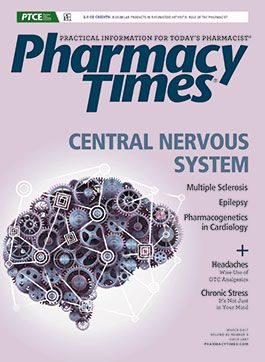Publication
Article
Pharmacy Times
Challenge Mounted to Inadequate Medicaid Payment Rates
Author(s):
Can providers in a state’s Medicaid program sue program administrators for establishing low payment rates, for beneficiary services, claiming that these rates violate mandates in the federal Medicaid statute?
Issue of the Case
Can providers in a state’s Medicaid program sue program administrators for establishing low payment rates, for beneficiary services, claiming that these rates violate mandates in the federal Medicaid statute?
Facts of the Case
An organization that provided in-home services to Medicaid beneficiaries in a northwestern state filed suit challenging the reimbursement rates established and paid by the state’s Medicaid agency. The basis for their lawsuit was a provision in the federal statute establishing the federal—state partnership to provide services to the indigent that required the state’s plan for services to “assure that payments are consistent with efficiency, economy, and quality of care” while simultaneously “safeguarding against unnecessary utilization of … care and services.” Their claim was that the state was reimbursing them at rates below what the wording of the federal statute required, so they sought an injunction ordering the state program administrators to cease paying them at inadequate rates and to increase the payment scale.
The state agency established rates used to pay for services based on the amount it wanted to spend for operating the Medicaid program, not on how much the services being provided actually cost. The program providers pointed to a provision in the federal Medicaid statute that requires states to establish Medicaid payments at a level “sufficient to enlist enough providers so that care and service are available under the (Medicaid) plan at least to the extent that such care and services are available to the general population ... in the geographic area.”
The US District Court ruled in favor of the providers, and the state agency appealed. The US Court of Appeals also sided with the providers. The crux of the arguments made in those 2 federal courts was that a provision in the US Constitution, known as the Supremacy Clause, was the applicable law. The clause was interpreted to invalidate state laws that “interfere with or are contrary to the laws of Congress.” That interpretation was longstanding, having been handed down from the nation’s highest court in a case decided in 1824! The state requested that the US Supreme Court hear the case, and the court granted certiorari, meaning that it certified it would hear the case.
The Court’s Ruling
The Supreme Court ruled that providers of services covered by the state’s Medicaid plan did not have the ability to sue to challenge the state’s reimbursement rates and to enforce that provision in the federal statute.
The Court’s Reasoning
The Supreme Court ruled that the providers of services to Medicaid beneficiaries may not use the Supremacy Clause to make the agency comply with the payment provisions in the federal Medicaid statute.
In an opinion written by the late Justice Scalia, the court ruled by a narrow margin (5-4) that the wording of the Supremacy Clause creates a “rule of decision” that “merely instructs courts what to do when state and federal laws clash, but is silent regarding who may enforce federal laws in court and in what circumstances they may do so.”
Turning to the specific wording of the statute in question, the majority of the Supreme Court justices concluded that the federal Medicaid statute “implicitly precludes private enforcement” of the statutory provisions related to levels of payment. They pointed to 2 bases for this interpretation. First, the “sole remedy” provided by Congress was authorization of the Secretary of Health and Human Services (HHS) to terminate federal funding to all or parts of the state’s Medicaid program until the state brings the reimbursement policies into compliance. The court concluded that when Congress included this “express provision of one method of enforcing a statute,” it suggested that Congress intended to preclude other approaches to enforcement, such as authorizing private providers of services to sue. The second point was that while the termination of funding provision in the statute might not preclude a lawsuit by a provider when viewed alone, the Medicaid payment provision does eliminate the possibility of a private party’s provider lawsuit because it is so broad and nonspecific as to be “judicially unadministrable.”
So, what remedy does a provider have? The Supreme Court majority said the appropriate remedy is for a provider to work to motivate the HHS Secretary to take action against the state program. This approach of removing part or all of a state’s Medicaid funding is the way to go as recommended by the Supreme Court. However, wouldn’t that merely exacerbate an already precarious situation? Presumably, the state is not paying adequate reimbursement because of a shortage of funds and denial of federal funding would get the state’s attention, but may not improve the payment situation in the short term.
Dr. Fink is a professor of pharmacy law and policy and the Kentucky Pharmacists Association Endowed Professor of Leadership at the University of Kentucky College of Pharmacy, Lexington.







